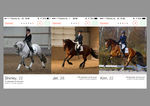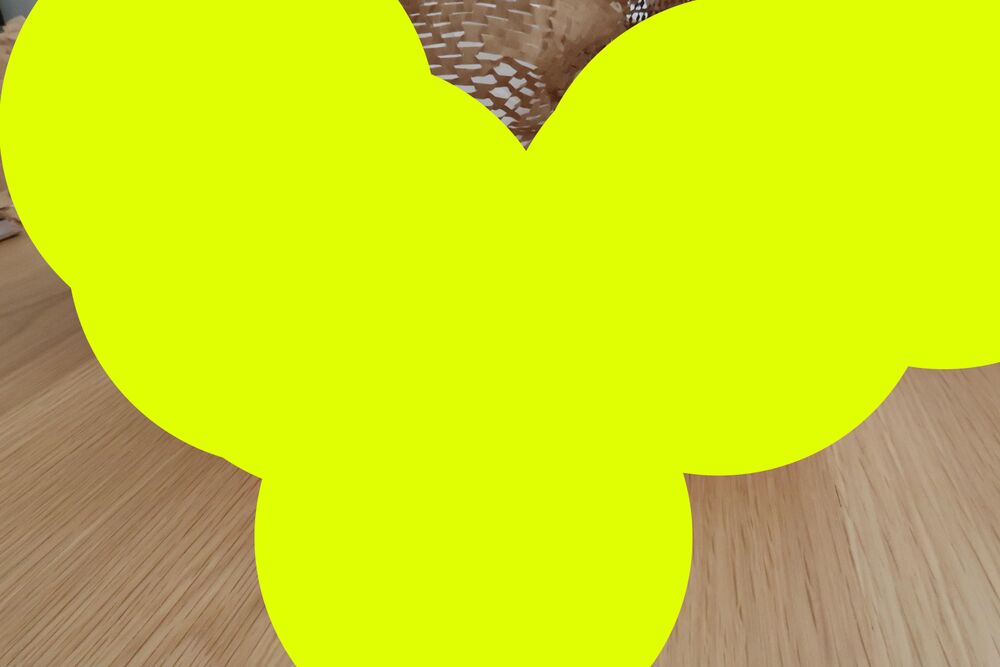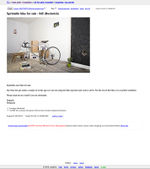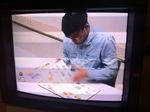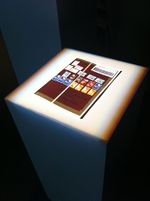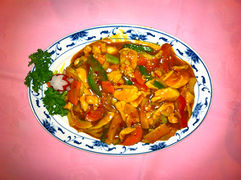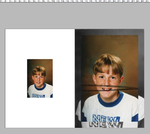User:10000BL/Project Proposalv2: Difference between revisions
No edit summary |
|||
| Line 111: | Line 111: | ||
BOOKS & ARTICLES: | BOOKS & ARTICLES: | ||
Sherry Turkle, Life on the Screen | Sherry Turkle, Life on the Screen, Simon & Schuster, 1997 | ||
Thomas de Zengotita, Mediated: How The Media Shapes Your World And The Way You Live In It, 2006 | Thomas de Zengotita, Mediated: How The Media Shapes Your World And The Way You Live In It, 2006 | ||
| Line 121: | Line 121: | ||
David R. Brake, Sharing Our Lives Online: Risks & Exposure in Social Media, Palgrave MacMillan, 2014 | David R. Brake, Sharing Our Lives Online: Risks & Exposure in Social Media, Palgrave MacMillan, 2014 | ||
Roger Cardinal & John Elsner, Cultures of Collecting, | Roger Cardinal & John Elsner, Cultures of Collecting, Reaktion Books Ltd, 1994 | ||
Villem Flusser, Een filosofie van de fotografie, Ijzer, 2007 | |||
Alev Degim, James Johnson & Tao Fu, Online Courtship, Institute of Network Cultures, 2015 | Alev Degim, James Johnson & Tao Fu, Online Courtship, Institute of Network Cultures, 2015 | ||
| Line 137: | Line 139: | ||
Mobile Love Industry, Vice, 2015 | Mobile Love Industry, Vice, 2015 | ||
==RELATION TO PREVIOUS PRACTICE== | ==RELATION TO PREVIOUS PRACTICE== | ||
Revision as of 11:55, 17 November 2015
TITLE: Tinder Aesthetics
Works of art based on a personal collection of Tinder screenshots
INTRODUCTION
For my graduation project I want to investigate how the dating-app Tinder mediates our self-presentation online. To investigate this question I want to start by investigating how Tinder is used by its users (interface), second who the users are (demographics), third how Tinder is perceived in a social- and cultural context and last I want to analyse my personal collection of Tinder screenshots.
WHY TINDER
Tinder became a popular dating-app among adolescents in a relatively short period of time. It became the subject that everybody was talking about, at least in the social circles I behave. Out of curiosity I started to use Tinder myself and I remember how insecure i was in using it. What pictures shall I upload and how will girls perceive me? Will I be successful in getting a date or will nobody notice me?
Soon I discovered that the pictures I saw of potential future dates did not differ that much from each other. I saw patterns and started to collect pictures of which I thought that they belong together. The collection exist now of 7000 screenshots which I organised in more than 20 categories ranging from 'Girls riding a Horse' to 'Girls eating a Pizza'.
Like every other application, updates of Tinder are released from time to time. I chose not to update my version of Tinder out of aesthetic reasons. This means that the collection I have and the current and future pictures I encounter on Tinder are all in the same design(?).
FRAMEWORK
Tinder offers us the possibility to connect to other people by uploading a series of personal photos (max. 6). Additional a user can add a biography of maximum 500 characters, yet the focus in Tinder lies on physical aspects of its users. How a person presents itself on Tinder is partially influenced by the outcomes he or she desires. Because of that it matters what kind of pictures a person uploads.
Are we free to upload whatever picture we want? No, since Tinder is linked to the image database of Facebook who's policy is that its users won't upload any nude or suggestive pictures. Other than that users of Tinder can upload any picture they want. That means users are in control and decide consciously which pictures to upload and which ones not. Tinder doesn't advice or direct its users in uploading certain pictures. So from this point of view we are safe and in control.
From another perspective we can argue that platforms like Tinder do indeed dictate us in the way we present ourselves. According to OKcupid, a dating website originated in 2004, who analyzed the images of their users on success-rate and outcome, certain pictures lead to better results. So a potential user of Tinder who heard about this research can benefit from this research while setting up his or her profile. Yet this research is compiled to Okcupid's own database. The conclusions are based on the users's input. Still the platform OkCupid is not saying literally which kind of pictures to upload and which ones not.
A powerful and maybe subliminal force that influence us in the choices we make when it comes to the selection and upload of images on different dating platforms lies in the design of those platforms themselves and how we subsequently see them in context of the society we live in. When we look at dating-apps there are a few things that stand out. The first observation is the simple interface. When we use Tinder, its focus lies on the physical judgement of others. To judge someone we simply swipe right or left, where the former indicates a positive judgment of the person seen and left a negative judgment. Swiping is a fun activity and gives Tinder and related apps the feeling of playing a game (gamification). The second observation is that Tinder provides instant gratification. It does not take long to see if the people you liked, likes you back. Reversely when someone already liked you and you like that person back you get a an instant notification. The usage of apps like Tinder gives you the feeling of winning something.
Dating apps like Tinder are easy accessible and require minimal investment. Compare this to datingsites who ask a potential user to fill in an extensive questionnaire and a monthly fee to get access to their platform. The position potential users take towards a datingsite and a dating app differs. A datingsite is considered as something serious. It requires time and investment. It would be a bad decision to not take a datingsite serious when you want to become part of it. In contrary a dating app is less serious and can be experienced as entertainment.
The level of entertainment, physical judgement and gamification play in my opinion a role in how we present ourselves on datingsites and dating-apps.
The research I conduct on Tinder will hopefully lead to a series of work. The past year I presented a number of prototypes. To define these works (better) a careful analyses is required in light of Tinder’s usage and perception.
RELATION TO A LARGER CONTEXT
More and more is technology integrating in our lives and bodies. Where machines freed us from physical labour during the industrial revolution, technologies nowadays take even more things out of our hands. The human is removed and replaced; the object is given independence. New technologies mimic human functions or emulate human behaviour. This is visible in the work Lonely Sculpture (Arnot, 2014) where a silicone finger taps profiles on Tinder.
The integration of technologies with our lives and bodies, changes our behaviour and sense of reality and space. Screens mediate the world we are seeing. The television gave us for the first time an image of the world far away. Because of the television concepts of far and near
were no longer separate, instead they converged. The screens we use nowadays deleted two other concepts, that of stationary and passivity. First, with the current screens we no longer need to be home to see another part of the world. Current screens gave us mobility. Second, instead of passivity we became active. We no longer only consume the world we also produce and organise the world around us. We are in charge in what we want to see and what we want to communicate.
Current screens mediate our experiences, extend our personalities and give us access to other realities. Online and offline, virtual versus analogue don't go hand in hand. Multiple realities can exist.
THESIS INTENTION
The focus on the thesis lies on the description of how dating-apps function, how we perceive and use them and how they mediate our behaviour. Because of the different screens that exist we can construct multiple realities and identities. When I think of how I behaved online in my project TE KOOP I loved the identity I had. I did not had the intention to sell the products I offered. Instead I was there to experience what people see on commodity markets and how communication goes. The position I had differs from the normal and I enjoyed the power and/or position I had. In TE KOOP there was no picture identification, with this I mean the only identity I could convey was a written one. On dating-apps this identity is firstly picture-based. Possibly is a written one, when you start to talk to someone.
How we construct an online identity and why we do that is something I'm interested in. To answer how a dating-app like Tinder mediates our behaviour I feel the need to compare the results with other platforms. How do we present ourselves on datingsites and is it different from Tinder? And what about a more serious platform like LinkedIn?
The second part of thesis is build around the meaning of screens and how they change our perception of self, distance and reality.
PRACTICAL STEPS
Last year when I started to use Tinder myself,I noticed certain patterns in the images that appeared to me. I started to collect these pattern and organised them in collections. The total collection encompasses about 7000 images. For the coming weeks I want to investigate what these images are and mean socially, culturally and demographically. When the analyses are done, content can be made and explained.
I enjoy to see how people present themselves online. I have a habit to look at pictures for a long time, to see what is there in the background lying on the floor or placed in the corner. I enjoy to see something which might have been taken out of the picture if it was noticed beforehand by the photographe. While I'm thinking of my artistic motivation, I remind myself of a series of photos I once took of a somebodies Facebook-profile. When looking at her pictures I could construct a story from being single to having a boyfriend from breaking up with her boyfriend. What I noticed for most was that when they took photos together they were always in the same order (boy left, girl right) and both always had the perfect same smile. I imagined that when putting all the photos together I would still get the same image.
In my project about Tinder it is not about the individual people I see and collect. It is about the similarity I observe in the pictures I encounter. My intention is not to harm any of the people I involve in the outcomes I'm thinking of. It is about the wider scope the pictures communicate to me. With future outcomes I don't think I harm the people involved for the following reasons: A) The screenshots only show first names and age, no last name or other info that can lead to the identification of an individual is shown B) The pictures are part or seen as a series where certain characteristics are (in charge?)
expand: They are online anyways, there is no optionnot to show... DONE TOMORROW
[Steve: but what about your own artistic motivation? What do YOU want to get out of it?]
WORKS BASED ON TINDER BY OTHER ARTISTS
Wanna Play? (2014) - Dries Verhoeven
Tinder In (2015) - Dries Depoorter
Tender (2014) - Cors Brinkman, Jeroen van Oorschot, Marcello Maureira & Matei Szabo
Lonely Sculpture (2014) - Tully Arnot
Tinder-O-Matic (2014) - Andrew Sink (review: http://3dprint.com/14224/3d-print-robotic-finger-tinder/)
Tinder as a dog (?) - Joe Veix
Ijoinedtinderasahorse.com
Face to Facebook (?) - Paolo Cirio & Alessandro Ludovico
Versions - Oliver Laric
Blogs that appeared based on Tinder
www.lionsandtigersandlove.tumblr.com
www.guysholdingfishontinder.tumblr.com
www.tinderguyswithtigers.tumblr.com
REFERENCES
BOOKS & ARTICLES:
Sherry Turkle, Life on the Screen, Simon & Schuster, 1997
Thomas de Zengotita, Mediated: How The Media Shapes Your World And The Way You Live In It, 2006
Jenna Burrel, Invisible Users: Youth in the internet Cafés of Urban Ghana, MIT Press, 2012
Norman J. Medoff & Barbara K. Kaye, Electronic Media: Then, now, and later, Elsevier, 2011
David R. Brake, Sharing Our Lives Online: Risks & Exposure in Social Media, Palgrave MacMillan, 2014
Roger Cardinal & John Elsner, Cultures of Collecting, Reaktion Books Ltd, 1994
Villem Flusser, Een filosofie van de fotografie, Ijzer, 2007
Alev Degim, James Johnson & Tao Fu, Online Courtship, Institute of Network Cultures, 2015
Brooke Wendt, The Allure of the Selfie: Instagram and the new self portrait, Institute of Network Cultures, 2014
Geert Lovink & Miriam Rasch, Unlike Us Reader: Social Media Monopolies and Their Alternatives, Institute of Network Cultures, 2013
Lenton, A. P., Fasolo, B., & Todd, P. M., "Shopping” for a mate: Expected versus experience preferences in online mate choice, IEEE Transactions on Professional Communication, 2008
Lenton, A. P., & Francesconi, M., How humans cognitively manage an abundance of mate options. Psychological Science, 2010
DOCUMENTAIRIES:
Mobile Love Industry, Vice, 2015
RELATION TO PREVIOUS PRACTICE
Working on or around online platforms, collecting data and making collections comes back in several other works I made or are working on.
TE KOOP
In my project TE KOOP I infiltrate online commodity markets e.g. Craigslist and Marktplaats. In TE KOOP I make photos of a furnitures or bikes in household settings. Each photo combined with a short description is turned in an advertisement and posted on several commodity markets around the world. The advertisements function as bait and elicit responses. Most responses are about the items offered. I answer the questions raised and try to start conversations with the respondents. In 95% of the cases the conversations stays around the product I seemingly offer. In some cases the conversations transform into an almost friendly conversation.
In TE KOOP both the photos and conversations are equally important, the photos of the items don’t exist without the online content generated and visa versa. The conversations differ in length and content, but are treated equally. They are all significant.
In the summer of 2015 I published my first book TE KOOP: Sprintello Racefiets.
UNBOXING
In a recent project I changed the role I play on commodity markets. Instead of pretending to be a seller, I became the buyer. In UNBOXING I look for stamp books of any particular kind. So far it was never really about the content of the stamp books, what mattered was the color of the cover of the book. This because I asked the seller to execute an action before shipping took place. When the price was agreed I asked the seller not to pack the book in a conventional envelop or box and send it, rather I asked and insisted that the book will be packed according to a set of rules I created. First I asked them to enclose the top, bottom and side of the book that could fall open during shipping. Second, I asked the seller to write my name and postal address on the cover of the book. Last, I asked the seller to place the postal stamps alongside the address. When I receive the package I create a setting and film with two cameras positioned from different angles the act of unboxing. In the edit I interchange the image.
Also part of UNBOXING are the e-mail conversations with the sellers. What differs from TE KOOP is that in UNBOXING the conversations are subordinate to the videos created. Next to the video, I create a copy of the original stamp book. But instead of having the same content, that of stamps, I create a book in which the content is my e-mail conversation with the seller and documentation in the form of photos of the original stamp book.
Nr. 39 with Rice
In Nr. 39 with Rice I comment on an event that occurred during an episode of Holland Got Talent in 2013. Chinese contestant Xiao Wang is asked by Dutch jury member Gordon if he is going to sing Nr. 39 with Rice. This sentence became the start for the project. Nr. 39 with Rice consists of a collection of photos of Nr. 39 dishes from Chinese restaurants, Mukbang-like video’s and interviews with chefs and restaurant owners. The original footage of the event of Holland Got Talent as of many other videos directly commenting the event are part of the project.
Rejected
A few years ago I came across a collection of school photos from my former elementary school. The collection is interesting because it hosts two types of pictures from the same person. Half of the collection consists of pictures marked with a (black) pen, the other half lacks the mark. The mark is an identification tool applied by the photographer to pictures which are in his opinion wrong. The pictures originate from a time when digital photography was non-existing. When a picture was made the photographer had no chance to see the picture back on a screen like we do now. Back then the photographer had to decide on the spot if a picture was good or not. Only after the film was developed the photographer could see if his decision was correct. To distinguish the two photos from each other he marked the one which was in his opinion wrong.
The collection consist over 200 pictures. The collection is ordered to the direction and length and thickness of the mark and turned into a book. Pictures at the beginning of the book are longer and thicker in length towards pictures at the end of the book. To add a personal note to the collection I included my personal elementary pictures found in the collection. Unfortunately they lack the mark by a pen, yet I used my own pictures to indicate the end and start of a new chapter.

